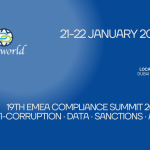As we saw in Part 1 of this two-part piece, regulatory expectations around ESG (Environmental, Social and Governance) are changing fast in both the UK and EU. In the EU, the Corporate Sustainability Reporting Directive (CSRD) now requires large companies to disclose detailed ESG-related risks, impacts, and strategies in line with the European Sustainability Reporting Standards (ESRS). This significantly broadens earlier requirements, such as those under the Non-Financial Reporting Directive, and applies to EU-based firms as well as non-EU companies with major operations in the bloc.
In the UK, although not fully aligned with the CSRD, the government has mandated climate disclosures for large companies and financial institutions, based on the Task Force on Climate-related Financial Disclosures (TCFD). These include reporting on climate risks, governance structures, metrics and targets. UK regulators like the Financial Conduct Authority (FCA) and Prudential Regulation Authority (PRA) also expect firms to embed ESG into governance, risk management and strategic decisions.
Across both regions, ESG compliance is moving from optional to mandatory, emphasising transparency, internal controls and board-level accountability. Against this backdrop, organisations must consider how prepared they are to conduct internal ESG investigations. This article explore the second group of three key questions that organisations need to ask about their level of readiness. How does your organisation match up to these three issues?
Confidentiality
Key Question: How well do we preserve confidentiality, manage conflicts of interest and maintain impartiality during investigations?
ESG investigations often touch senior leadership and sensitive board‑level decisions, making impartiality particularly fragile. For example, if a sustainability chief is implicated in misleading “green” claims, internal HR or legal teams may find themselves conflicted, struggling to investigate peers or their own strategies.
Under the EU Whistleblower Directive, companies with 50+ employees must maintain strict confidentiality for whistleblowers and accused parties, and offer anonymous reporting channels, with General Data Protection Regulation (GDPR) ‑level data protection built in. The UK lacks a binding Directive, but the Public Interest Disclosure Act mandates protections and many firms voluntarily adopt hotline systems modelled on EU standards. Employers must also ensure compliance with UK GDPR and EU GDPR during investigations, a critical concern when processing personal or special‑category data.
A growing trend is engaging third‑party hotlines or independent ombudsmen to receive ESG‑related complaints. For instance, KPMG operates a “Speak Up Hotline” overseen by an independent ombudsman and managed externally by ClearView Connects, enabling anonymity and reducing internal conflicts of interest. Similarly, Pfizer offers a Compliance Helpline managed by Ethicspoint, staffed externally to ensure impartiality .
Many organisations still rely on internal teams for investigation, which poses risks of bias or leaks. To counter this, boards should stress‑test their processes by running simulated ESG breach scenarios, such as a whistleblower alleging procurement corruption linked to climate strategy, and then observe whether confidentiality is maintained, whether conflicting loyalties emerge, and whether independent oversight remains intact.
Challenge | Have you stress‑tested systems that can uncover hidden vulnerabilities and ensure investigations remain both confidential and impartial?
Pace and Transparency
Key Question: Are we confident we can act swiftly and transparently, while also safeguarding reputational and legal risks?
These days, ESG breaches can unfold in hours not months. A leaked whistleblower email, a viral social post or activist investor pressure can send reputational damage spiralling before traditional internal processes even begin. For instance, shareholder activism at firms such as BlackRock, which was targeted by Bluebell Capital, highlight how swiftly reputational pressure can mount in the ESG realm. Organisations that move too slowly risk missing the moment to demonstrate responsiveness.
Regulators in the UK (FCA, PRA) and the EU increasingly expect prompt action when ESG risks materialise, with expectations edging closer to those for cyber breaches. Yet speed must not override diligence. Transparency here doesn’t mean full public disclosure, but stakeholders, especially employees and investors, now expect clear confirmation that investigations are underway. A brief email update or public statement acknowledging the issue and outlining next steps can restore faith and deter speculation.
A growing practice among forward-thinking firms is the use of crisis simulation exercises tailored to ESG breaches: table‑top drills or AI-enabled simulations that mimic real-world pressure scenarios. These are now common in sectors beyond energy or financial services, including retail and tech. An AI-driven mock whistleblower complaint about procurement favouritism or carbon reporting might uncover bottlenecks or governance gaps in response protocols.
AI tools and automation also now play a pivotal role in accelerating data collection: flagging relevant emails, summarising witness statements or collating document dumps, thereby cutting weeks from traditional timelines. But legal teams and compliance advisers must stay closely involved to ensure fairness and privilege protection.
Challenge | Call to action: develop a cross‑functional rapid response protocol for ESG incidents, akin to a cyber response playbook. Include legal, HR, PR and ESG leads with clear roles and escalation points. Regularly rehearse the protocol under realistic scenarios, then refine based on feedback. Only by combining speed, transparency and legal prudence can organisations maintain credibility when stakes are highest.
Action
Key Question: Do our investigation outcomes consistently lead to meaningful action and cultural improvement?
All too often, organisations conclude investigations with little more than a perfunctory memo and no follow‑through. This breeds internal fatigue and erodes confidence in the process. Employees grow wary: “What’s the point of raising issues if nothing changes?”
An ESG investigation must end in more than mere defence; it should catalyse change. That means closing the loop through root‑cause analysis, assigning clear accountability, and implementing tangible reforms. For example, after a 2022 ESG breach at a European financial services firm, the board mandated overhauls to procurement policies and supplier due‑diligence protocols, rather than simply disciplining individuals.
A fresh approach many are embracing is the ESG incident dashboard. This is a real‑time visual tool that captures and aggregates data points such as recurring social complaints in one division or environmental non‑compliance in suppliers. These dashboards closely correlate patterns with systemic gaps and feed into risk raising and board review. Platforms like Microsoft Power BI or bespoke dashboards help embed this in monthly ESG‑progress reports.
Crucially, organisations should incorporate employee feedback loops once investigations conclude. Anonymous post-investigation surveys and optional town‑hall Q&A sessions serve two purposes: they signal engagement and help calibrate cultural repair. A UK retail group recently used this method after allegations of unfair labour practices. In this case, employee feedback led to enhanced grievance mechanisms and DEI training.
Beyond fixing the immediate issue, ESG investigation findings must shape board‑level strategy. If an environmental check identifies repeated lapses in supplier audits, that insight should inform board discussions on supply-chain resilience or climate governance mandates.
Challenge | Treat every ESG investigation as a change trigger. Publish anonymised summaries of key learnings internally, share best practices across the organisation and benchmark progress over time. Cultural improvement should follow the investigation, not trail behind it.
Ready for Change
Investigation readiness isn’t just a box‑ticking exercise, it requires a genuine cultural mindset. Leading organisations view internal investigations not merely as defensive tools but as catalysts for improvement. In today’s environment, ESG failures can escalate rapidly; readiness demands proactive leadership, not just regulatory compliance. Just as Danone has sustained its B Corp commitment in spite of controversy (see ‘Business School Teaching Case Study’, below), firms prepared to learn and adapt stand out as true ESG leaders.
And what about you…?
- If a significant ESG breach occurred tomorrow, how confidently could your organisation respond not only to contain it, but to emerge stronger?







